Thuja Teddy planting rules and features of caring for her throughout the year
Planting a thuja Teddy in the garden is gaining popularity, because care is not at all burdensome, and it does not lose its decorative effect all year round. It is a miniature plant that can grow both outdoors and in a container, decorating rocky gardens, alpine slides and terraces. Looks beautiful along the paths and in the foreground in composition with other plants.
Description of Tui Teddy
Thuja Teddy is a slow-growing plant. The maximum height that it gains in 10 years is 30 cm. The thuja is slightly wider, 40-45 cm wide. With good care, Teddy sometimes grows to 50 cm, but this does not happen soon. The annual growth of a miniature tree is only 2-3 cm. The advantage is that shaping pruning is not required for the thuja Teddy. After a few years, the bush acquires a dense, dense spherical crown, which looks soft and plush from a distance. Because of this appearance, this variety got its unusual name.
Shoots on branches are located close to each other and are covered with thornless needles. The needles are dark green in color, but in cold winter they can change color to bronze. The color is restored in the spring.
Thuja Teddy is sun-loving and shade-tolerant, loves humid air and frequent watering, especially in the first year after planting. It hibernates without shelter, but branches can deform from heavy wet snow. Stagnation of water in the place of cultivation is unacceptable, as well as dry soil.
Choosing and preparing a place for growing thuja
This small plant looks beautiful in the foreground garden. The location must meet a number of requirements.
- The site should be illuminated by the sun for as long as possible during the day, but it is better if the light is diffused at noon. This will help prevent the needles from burning out on the sunny side. In a shaded place, Teddy will grow, but will lose its attractiveness - the shoots will stretch out, the spherical crown will not be dense.
- The water on the site should not stagnate either after snow melts or after rains.
- In winter, snow cannot be thrown on the place where the thuja is planted - the branches are deformed, and the shape of the bush cannot always be restored.
- Protection from the wind is necessary, especially from the north and west.
A pit is dug 70 cm deep, 50 cm wide. A drainage layer 20 cm thick is poured at the bottom. For drainage, you can use fragments of bricks, stones, crushed stone, expanded clay. Thuja loves fertile, loose soil. If the land on the site does not correspond to this, is too heavy or sandy, then it must be completely changed in the landing pit. You can buy ready-made soil, or you can prepare it yourself. To do this, mix 2 parts of completely rotted humus or compost, 1 part of peat and 1 part of sand. Fresh manure is not suitable for thuja.
Landing
Thuja is usually sold in a container. A plant with a closed root system can be planted from spring to autumn. If the roots of the seedling are not protected, then the best time for planting is from late April to mid-May or from early September to early October.
A 2/3 hole is filled with prepared earth, tamped lightly and spilled with plenty of water. The rest of the soil is mixed with complex mineral fertilizer. Nitrogen, phosphorus and potassium should be taken in equal parts. One bush will require 100 grams of fertilizer.
It is important to carefully remove the Tuya Teddy from the container when landing. During the day, the soil is moistened, and before planting, it is carried out with a sharp knife along the inner wall of the container. You can turn the container upside down and lightly knock on the bottom, while holding the bush.
Planting is carried out in such a way that the root collar is strictly at the level of the soil - just as it was in the container. It is not necessary to straighten the root ball, but if part of the earth has crumbled, the voids must be filled with earth.
The first year after planting, watering should be regular and frequent. Thuja Teddy evaporates a lot of moisture, without replenishing it, the plant will dry out.
Care
Thuja care is standard - watering, weeding, loosening, feeding. They should be carried out taking into account the characteristics of this variety of thuja.
- Do not let the soil dry out. Watered once a week, 8-12 liters of water are poured under one bush, depending on the size of the plant. If the weather is hot, then water it 2-3 times a week.
- Thuja loves sprinkling. If watering is enough to be done once a week, then it is necessary to irrigate the needles more often. For this she will thank the bright color of the needles.
- Loosening is carried out very carefully, because the roots are in the upper layer of the soil. If some of them are damaged, the shoots from the side of the damaged roots may begin to dry out.
- It is enough to apply top dressing once a year - in the spring. When the ground thaws, 60 grams of complex mineral fertilizer is applied under each thuja.
- Weeds must be removed in a timely manner, especially perennial ones. Weeds can grow above the thuja, thereby hiding it from the sun, and the roots of unwanted neighbors will take all nutrients from the soil.
Advice
In order not to loosen and weed, the trunk circle can be mulched with peat, compost, mowed grass or bark. In addition, mulch keeps the soil moist for a long time, which reduces the frequency of watering.
Formative pruning is not carried out. After a few years, the crown itself forms in the form of a ball. In the spring, as soon as growth is formed on the shoots, carry out sanitary pruning... Broken and dried branches are cut out. If some twigs grow back faster than others and become too long, which spoils the appearance of the plant, you can shorten them. In this case, more than 1/3 of the growth cannot be cut off.
The needles inside the crown will crumble after a while. This is a natural process. Over time, the needles will remain along the perimeter of the crown, and there will be bare shoots inside. Due to the fact that the shoots grow densely on the branches, this will not be noticeable.
Preparing for winter
Thuja is winter-hardy, winters well without shelter. In severe winters, only young plants, aged 1-3 years, are insulated. They are wrapped in agrofibre with a density of 60g / m2... If the thuja grows in a container, then it must be insulated to protect the roots from freezing. For this, straw mats, mats, polystyrene or dense agrofibre in several layers are used. When snow falls, it must be thrown over the container in the form of a small snowdrift.
So that the plant does not deform under the weight of the snow, in the fall, the branches are tied until the crown has become spherical. When the thuja has formed the shape of a ball, you cannot tie its shoots. For protection from snow, a construction metal mesh with frequent cells is placed above each plant. Place it above the plant in the form of a bridge.
In spring, when the sun begins to shine brightly, the thuja must be protected from burns. There are two options.
- White agrofibre is put on the bushes in one layer.
- A small protective screen is installed on the sunny side, which will create a small shadow.
The protection is removed gradually, daily accustoming the bushes to the sun's rays. Do this in the morning or before sunset.
Brief summary
Thuja Teddy is an unpretentious plant. The place for her is chosen sunny, with light partial shade in the midday heat. When planting, drainage is laid on the bottom of the pit, and the soil is prepared loose and fertile. Watering should be done weekly, and even more often in the first year after planting. The crown is irrigated several times a week.
Pruning is carried out only sanitary, and it is enough to feed it once a year. For the winter, only young seedlings are sheltered, and in order to protect the branches from damage, they are tied or protected from snow.In the spring, it is necessary to protect the plant from bright sunlight.
If you adhere to these rules, thuja will decorate the garden for many years.
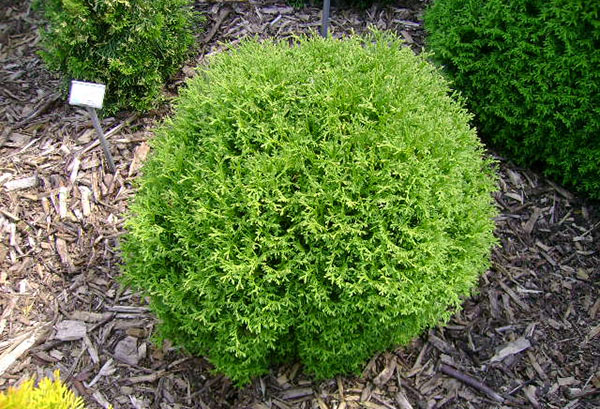
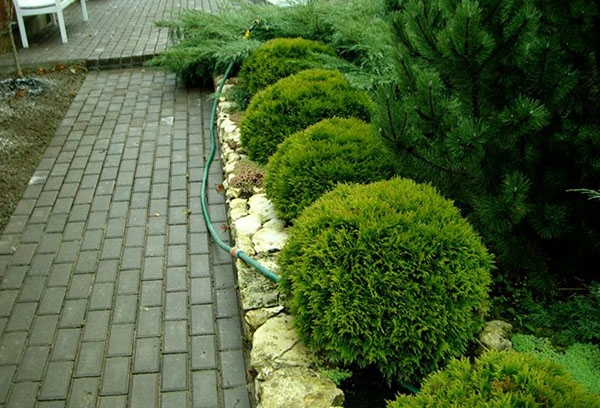
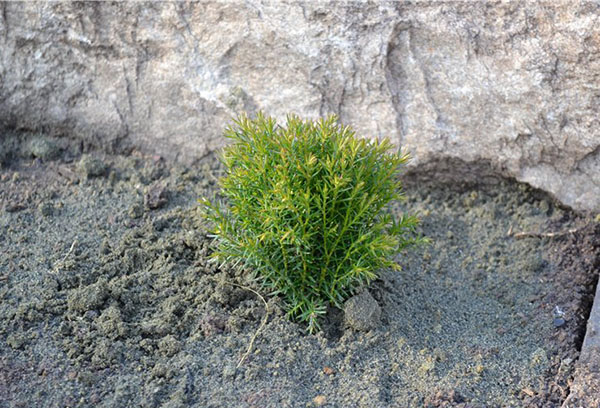
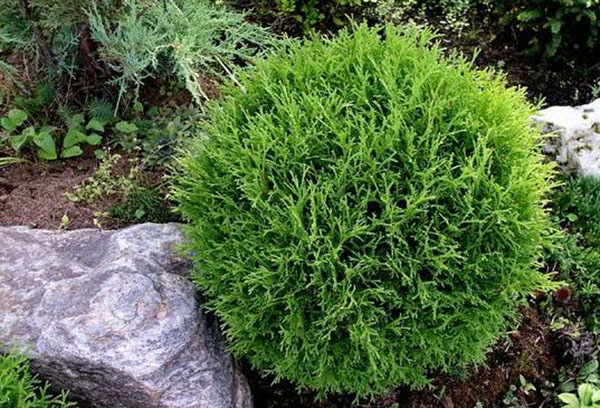
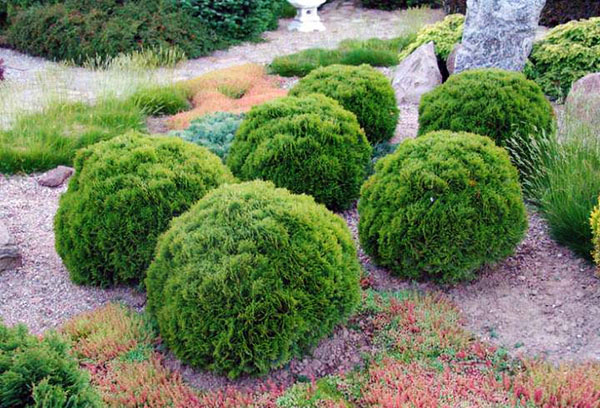

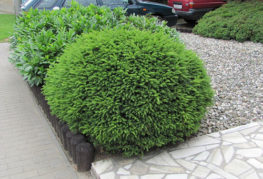
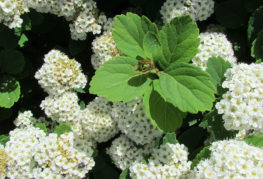
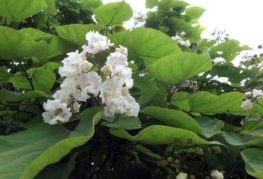
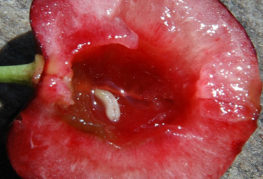
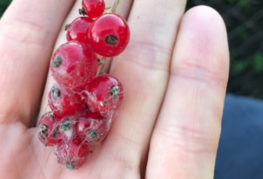

and will be published shortly.